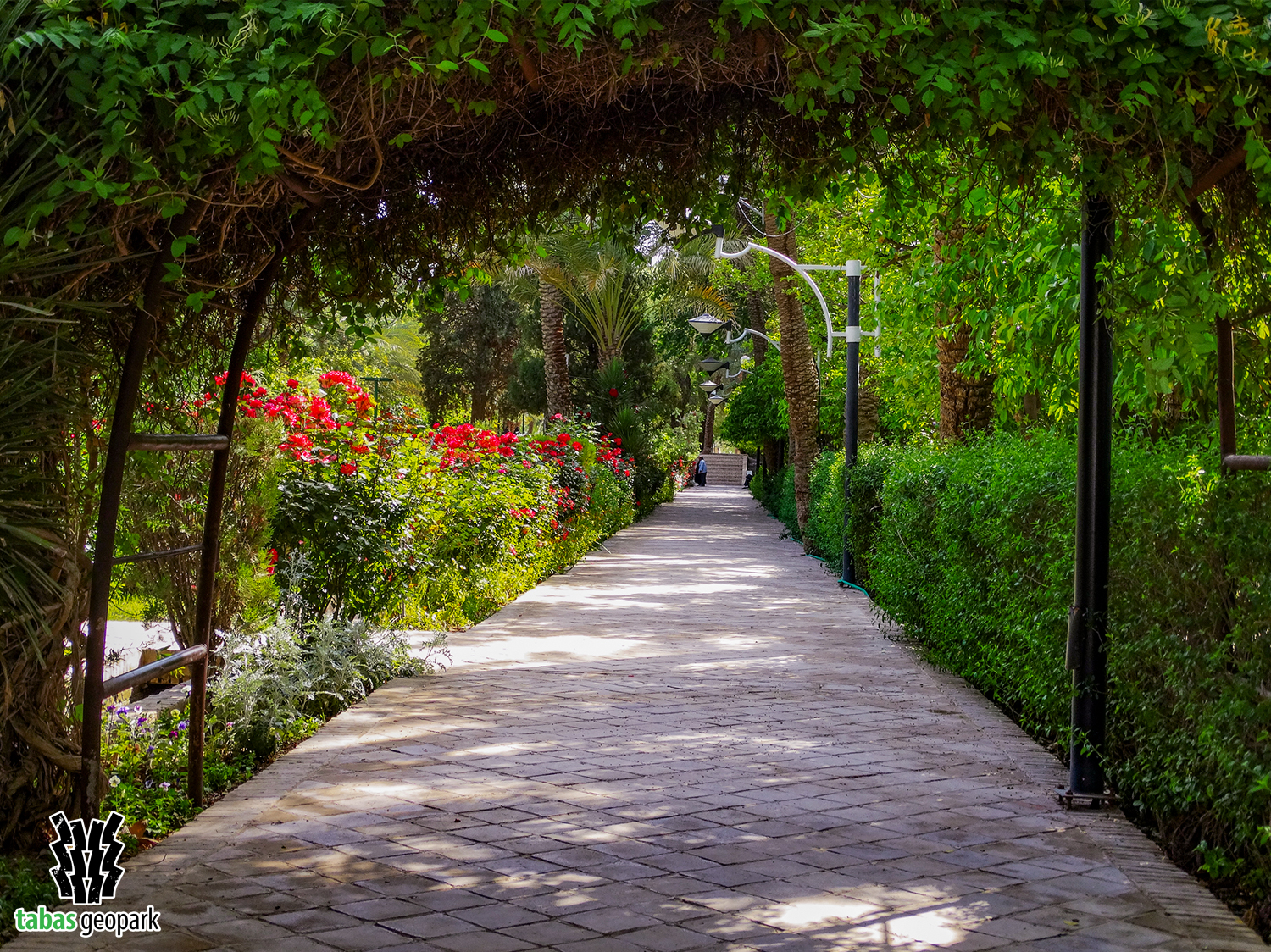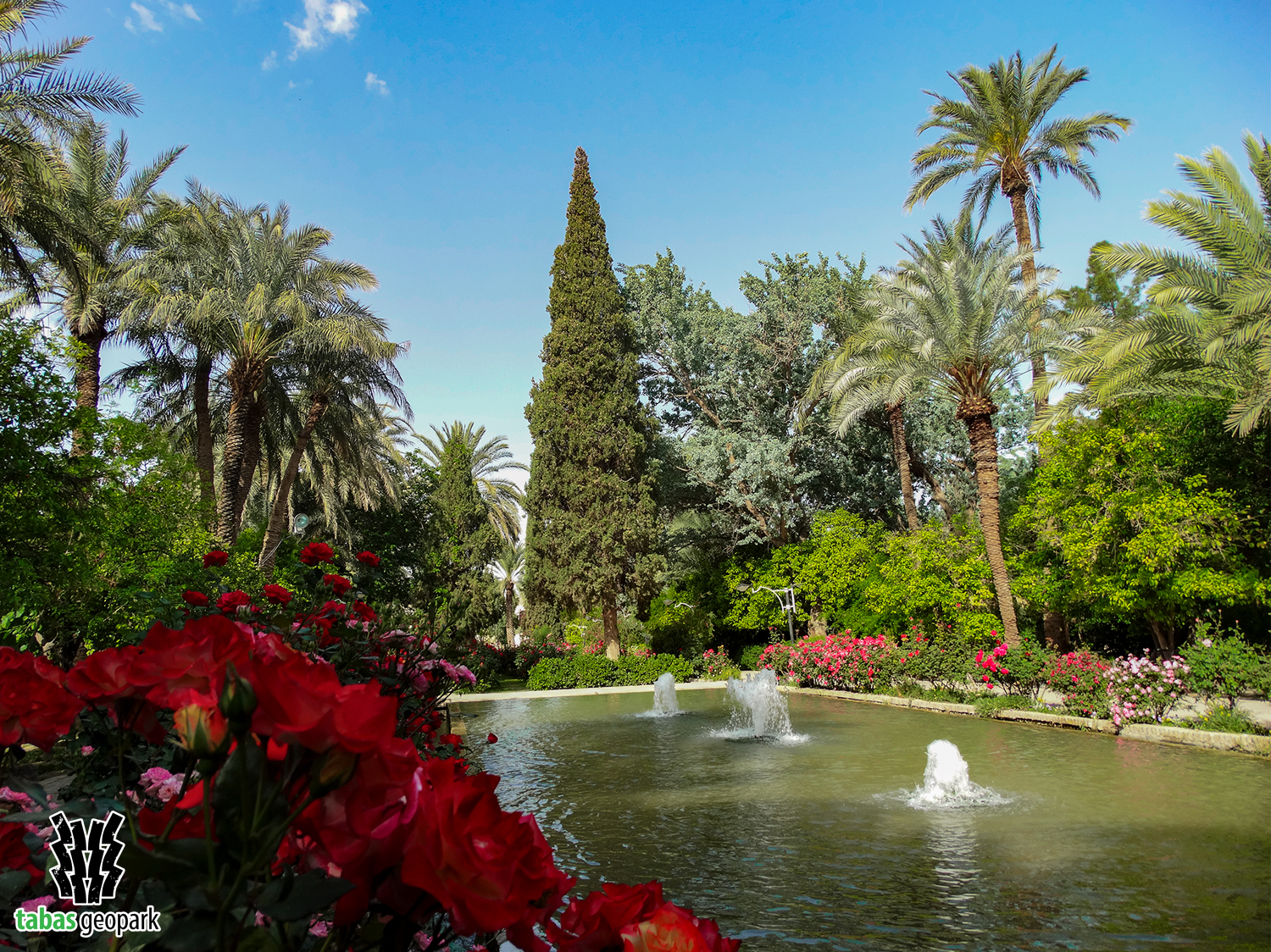Golshan Garden is one of the most magnificent cultural and historical geosites of Tabas Geopark and among the most significant gardens in Iran and the world, shining like a green jewel between the two great deserts of Iran (Lut Desert and the Central Desert of Iran). It is one of the government gardens registered in the list of national monuments of Iran under number of 1310. This garden was built by Mir Hassan Khan Sheibani (the third ruler of Tabas) in the Zand period from the Khans dynasty appointed by Nader Shah Afshar. The garden was named one of the top 50 gardens in the world by the London Telegraph in 2008. One of the important features of Golshan Garden is the existence of a permanent flowing water originating from the heights of East Tabas (Shotori Mountain Range). The flow of water throughout this garden and its movement in four directions and four streams symbolizes the four paradise streams used abundantly in Iranian gardens. All angles are 90 degrees in the design of the garden, and the presence of the mansion at the entrance along with the lack of pavilions in the interior of the garden can be mentioned as other features of Golshan Garden. Also, the tropical trees such as palms and citrus along with trees and plants of the cold regions such as cycads, roses, and sycamores have created a spectacular paradox.
Like other Iranian gardens, the design of Golshan Garden consists of two lanes, one located at the entrance axis and the other perpendicular to it, dividing the garden area into four large squares, while waterways also play an important role in dividing the garden. Each of these squares is again divided into four smaller squares. The area of this garden is about 8 hectares, and the garden plan is most likely implemented in a grove, because there are scattered date trees in it with no significant arrangement. However, the designed geometry of this garden is symmetrical and proportional in terms of irrigation, vegetation, and structure. The decorations of Golshan Garden mansion include Islamic nodes, the structure of which has a feature of self-similarity and the repetition and duplication of which has a micro-scale characteristic, so that a large scale is discovered through concentration on the details. The node is also very regular and scalable in addition to having a very complex system. The geometry of Golshan Garden is also derived from fractal naturalism or self-similarity. The designers of Golshan Garden have taken fractals from the nature self-similarity, using this geometry as a way to express the whole in part and the part in whole. In general, the knowledge of the nature and action of a combination leads to unity. To achieve this unity and come to a single overall result, recognizing the components and combining them properly is one of the architectural requirements, which is best reflected in the systems making up Tabas Golshan Garden.
The building of Golshan Garden mansion was one of the landmarks and an important sight of Tabas city, from whose porches the view of the garden and the city could be observed. This mansion was completely destroyed in the earthquake of September 16, 1978 in Tabas, but was later rebuilt.
– The scientific resources are available in the management of Tabas Geopark.
The use of this article is unrestricted by mentioning the source.



